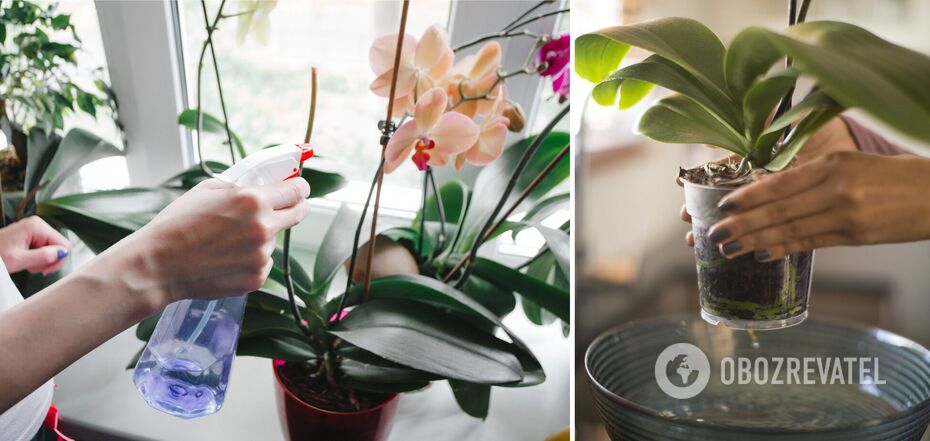Life
How to water orchids so that they grow quickly and bloom constantly: simple tips
Perhaps the most difficult aspect of growing orchids at home is watering the plant as it is extremely sensitive to both excess and lack of moisture, so many people cannot get used to proper care on the first try. That is why it is necessary to learn all the nuances of how to water an orchid properly before buying the plant.
OBOZREVATEL has collected tips from experienced florists. We are going to tell you about different ways and nuances of watering the plant. Without it, it will not be able to bloom regularly because it will spend too much energy on maintaining its vitality.
Why you need a transparent pot
Orchid pots are often made transparent precisely because the condition of the plant's roots is the best indicator of its need for moisture. It is important to remember that excessive watering, or rather stagnant water, is worse for an orchid than a slight delay in watering. So, how do you know the condition of the plant's roots?
- they have a pronounced green color and look full and elastic: there is enough moisture;
- the roots have become light, and cracks and tears have appeared: these are the signs of underwatering;
- brown color and roots look like they are covered with mucus: it is a symptom of decay and that the root system of the orchid will need treatment.
Another good indicator is moisture droplets inside on the walls of the pot. If they are present, it means that the microclimate inside the container is optimal. After the drops disappear, wait a day or two and water the plant.
Experienced orchid lovers can determine the level of moisture by the weight of the plant pot, and water when it becomes too light. For less experienced people who have planted a flower in an opaque container, it is recommended to check the condition of the soil by dipping a support stick or a long toothpick into it.
Partial watering and ventilation
If you see that there is still moisture in the pot but you are concerned that the top layer of the substrate is already dry, you can spray the plant. This will freshen it up and not cause it to overflow.
To ensure that the moisture evaporates more or less evenly throughout the entire thickness of the orchid soil, you can make ventilation holes in the walls of the pot. This will also simplify the access of air to the roots. In general, orchids do not grow in the ground but rely on trees, so root respiration is quite natural for them.
Right water
In the rainforest, the plant is watered by rain, so soft water is best for it. Tap water will be too hard. It can be used only after preliminary settling. Filtered water is also suitable.
The water temperature should be room or slightly warmer. Orchids do not tolerate cold watering.
How to water orchids properly
While the plant is in the transportation substrate, it can be watered like any other flowerpot from above. However, it is important not to touch the leaves as this can lead to rotting. Therefore, watering should take place closer to the edge of the pot.
After you have transplanted the orchid into a special substrate for this type of plant mixed with bark particles, it is better to water it by immersion. In this case, it will have time to be saturated with water and will effectively give it to the flower.
For this method of watering, take a deep container in which you can put the orchid pot. Fill the container with the prepared water so that its level is a few centimeters below the edge of the pot, and place the orchid inside. After 15-20 minutes, when it has absorbed the water, take out the flower and wait until all the excess moisture has drained off.
If you are watering several orchids at once, pour less water so that it does not rise above the level of the pot and does not flood the green part of the plant. It is even better to first transfer all the orchids to a watering container and only then carefully fill it with liquid.
After such watering, it is important not to move the plant to a place where it can freeze. For example, in winter, you should not move it directly to the windowsill, especially at night. Keep the pots in a relatively warm place without drafts.
Subscribe to OBOZREVATEL on Telegram and Viber to keep up with the latest news



























